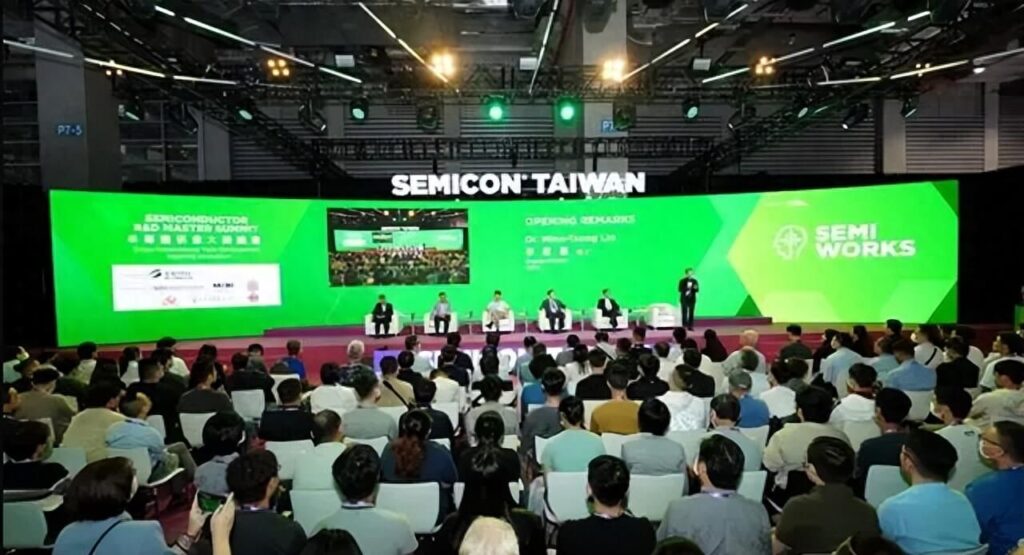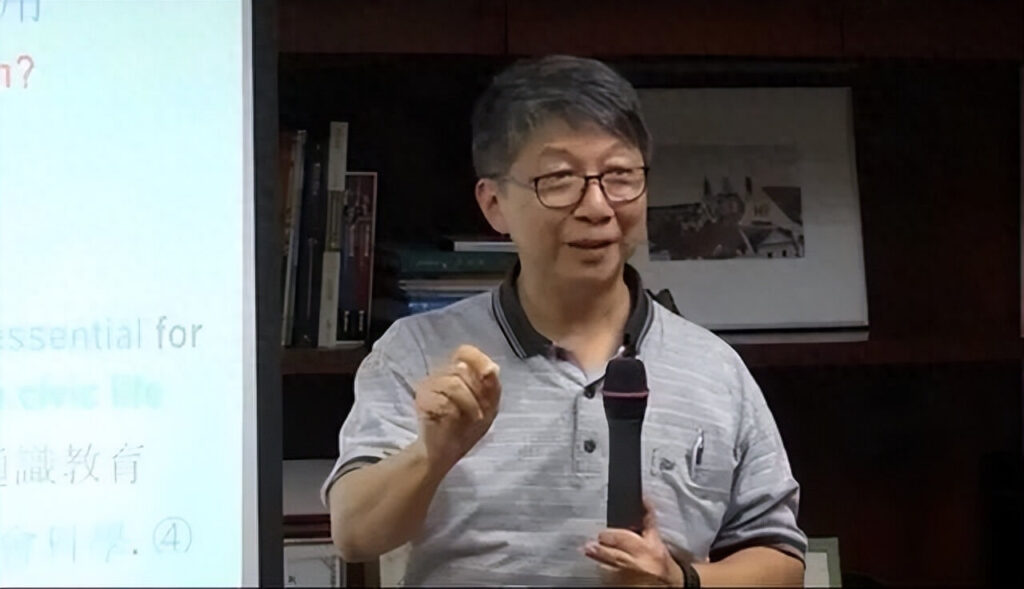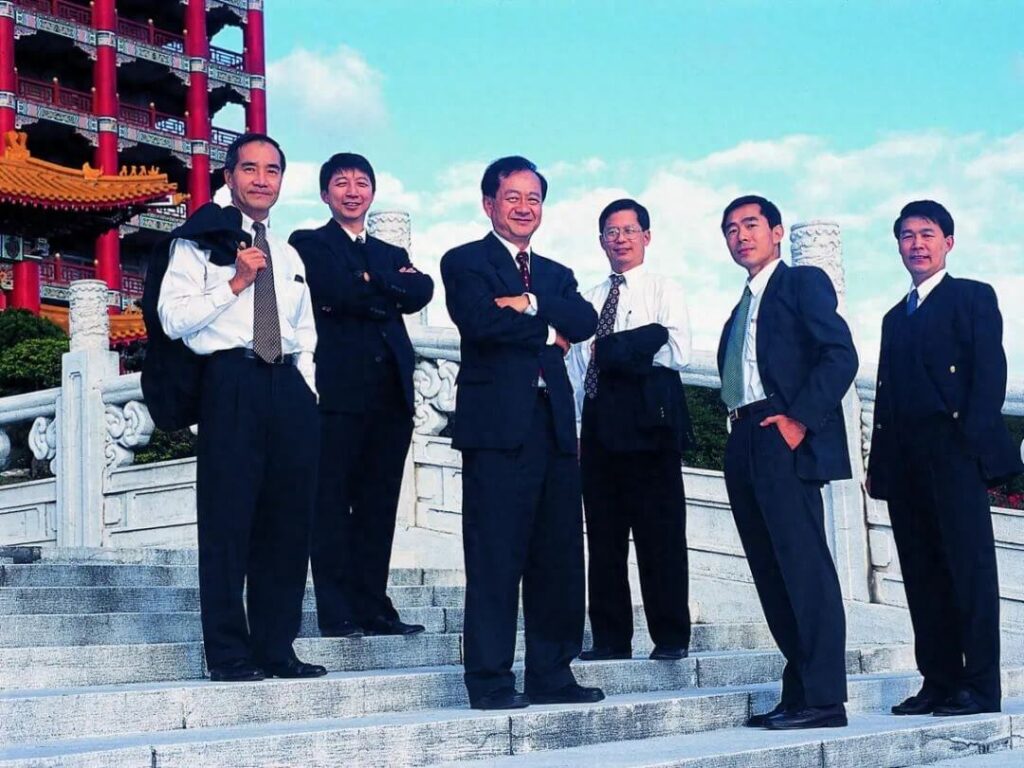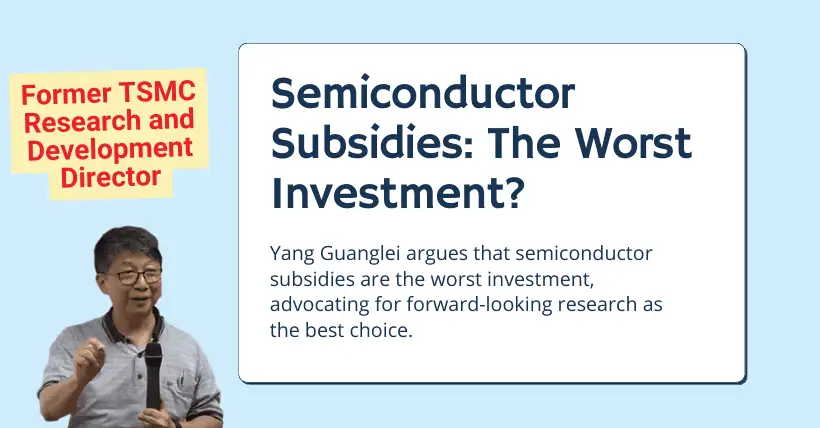Introduction: Recently, at the SEMICON Taiwan 2023 “Semiconductor R&D Master Symposium,” former TSMC (Taiwan Semiconductor Manufacturing Company) Research and Development Director Yang Guanglei discussed his former colleague, one of the “Six Knights of TSMC,” Liang Mengsong.

Liang Mengsong, the former Research and Development Director at TSMC (Taiwan Semiconductor Manufacturing Company), was one of the “Six Knights of TSMC,” alongside Lin Benjian, Yang Guanglei, Jiang Shangyi, Sun Yuancheng, and Yu Zhenhua. They were credited with driving TSMC’s advancements in semiconductor processes. Among the five guests participating in this discussion, three of the “Six Knights,” namely Yang, Sun, and Yu, were present.
Yang Guanglei revealed that the initial idea behind this forum was to have all “Six Knights” together in one place. However, it proved somewhat challenging to invite Liang Mengsong, so this gathering resembles more of a “pseudo Six Knights reunion.”
Among the “Six Knights,” Liang, Yang, and Jiang have experience working in semiconductor fabs in mainland China. Currently, the only one still holding responsibilities for process development in mainland China is Liang Mengsong. He remains one of the most legendary and controversial figures in the cross-strait semiconductor industry.

Speaking of his former colleague Liang Mengsong, Yang Guanglei openly expressed his admiration for his work ethic, stating, “Whether he worked at Samsung or SMIC (Semiconductor Manufacturing International Corporation), he put his heart and soul into his work, giving it his all to prove his capabilities.“
According to the Taiwan Tech News, while Liang Mengsong is a figure often met with mixed opinions in the industry, even being labeled a “TSMC defector,” considering the complex landscape of international geopolitics and numerous technological constraints and export sanctions, his ability to lead breakthroughs in semiconductor technology in mainland China is undeniable. Referring to him as a “defector” might not fully encompass his dedication to the semiconductor industry; perhaps he should be seen more as a “catalyst.” It’s believed that history will eventually provide him with a new perspective and recognition.

As a figure who single-handedly influenced the landscapes of mainland China, Taiwan, and South Korea, both within and outside the industry, Liang Mengsong’s story has long been well-known. Here are a few notable events mentioned by Taiwanese media.
Liang Mengsong joined TSMC in 1992. Those who worked with him recalled that he was a complete workaholic, paying extreme attention to detail. During his tenure at TSMC, there were times when he had to work on weekends or holidays, and he occasionally brought his young son to the office.
Back then, Liang Mengsong firmly believed that miniaturization was the key to producing high-performance chips. He thought that others at TSMC were putting too much effort into different projects. However, at the time, TSMC was struggling with advanced packaging, and the higher-ups wanted him to shift towards this less popular area.
In reality, his achievements at Samsung showed that TSMC momentarily lagged in advanced processes due to its focus on miniaturization. It was only after a slowdown in advanced processes that TSMC’s long-standing efforts in 2.5D and 3D advanced packaging became a highly profitable business contributing significantly to the company’s performance.
Upon joining SMIC, Liang Mengsong managed to dramatically increase the yield rate of the 14nm process from 3% to over 95% in just 298 days. This achievement positioned SMIC as the sixth company globally, after TSMC, UMC, Samsung, GlobalFoundries, and Intel, capable of producing logic technology using the 14nm process.


Disclaimer: This article is created by the original author. The content of the article represents their personal opinions. Our reposting is for sharing and discussion purposes only and does not imply our endorsement or agreement. If you have any objections, please contact us through the provided channels.







